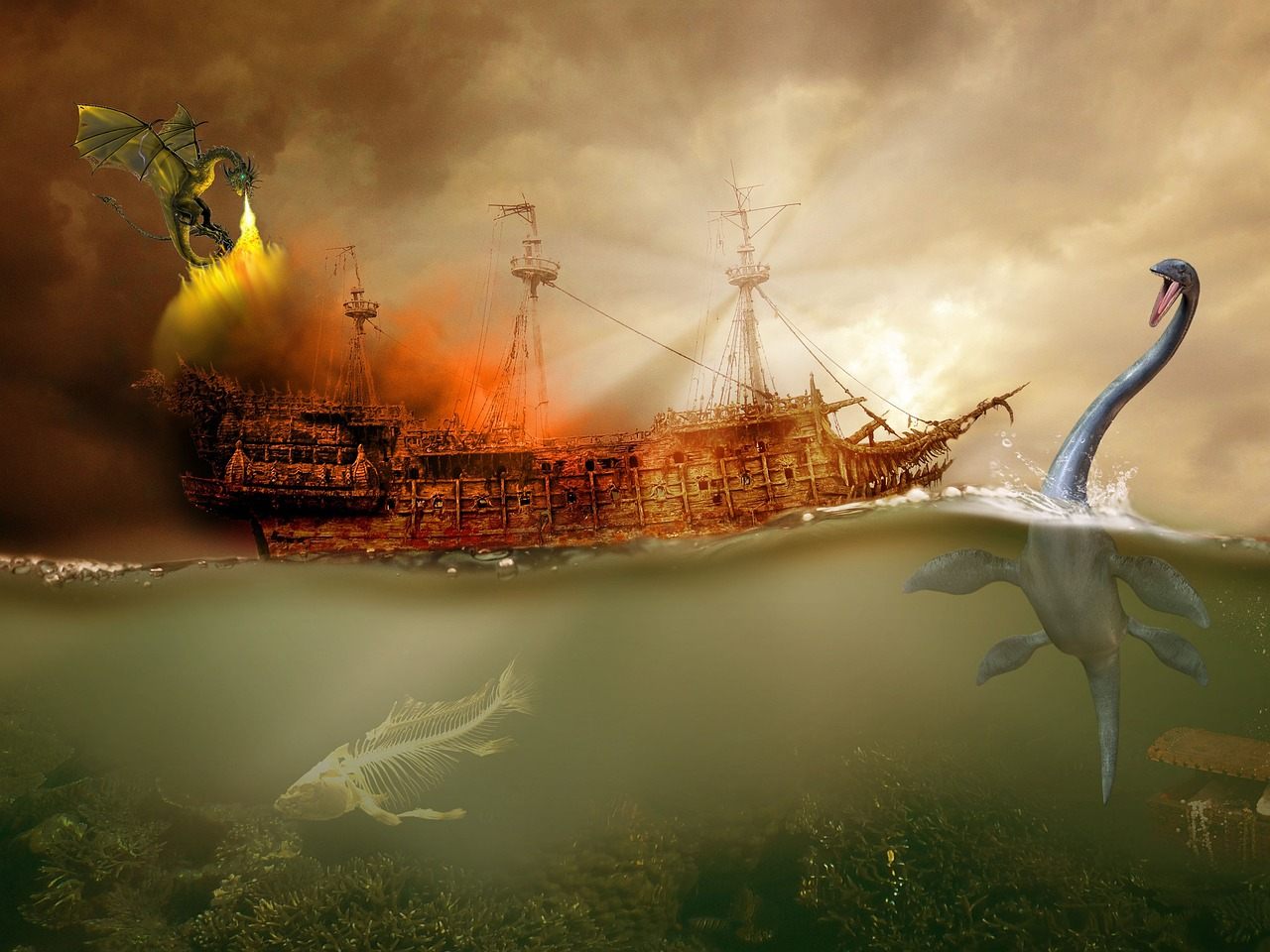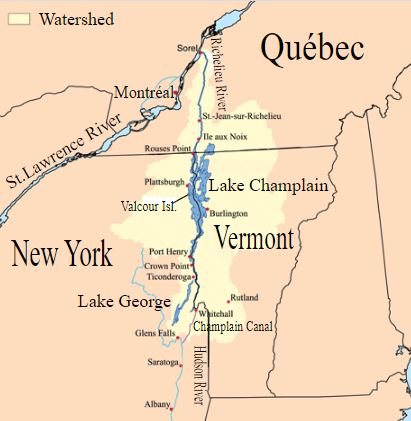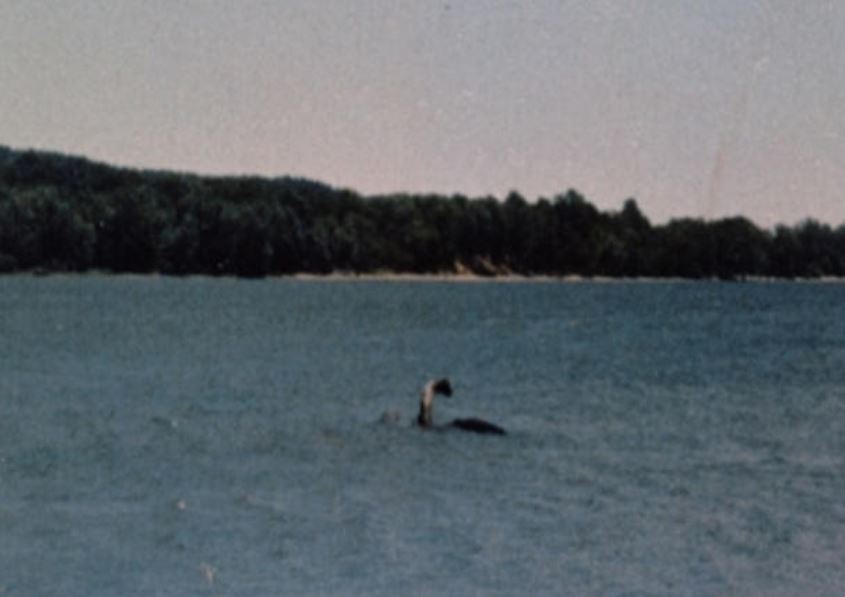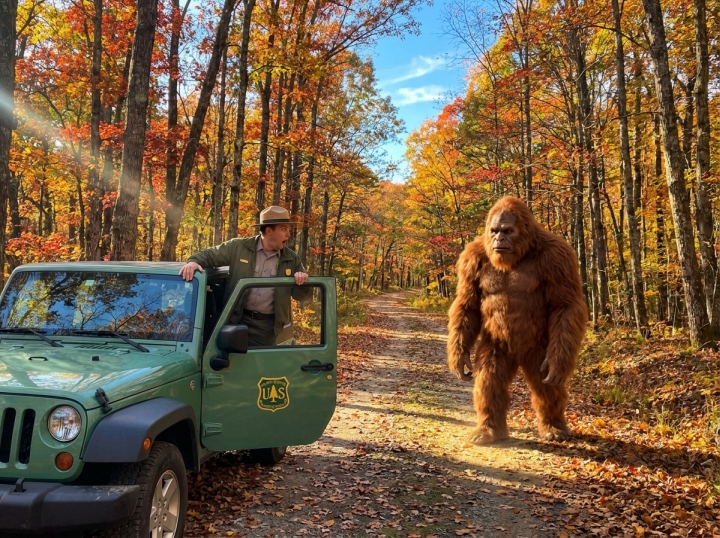
Champy: Lake Champlain, a captivating freshwater expanse, graces the northeastern United States, spanning across the borders of Vermont and New York. Nestled amidst the rolling terrain of the Adirondack and Green Mountains, this natural wonder forms a serene aquatic boundary between these two states, adding a unique charm to the region. Stretching over 120 miles in length and offering a surface area of approximately 490 square miles, Lake Champlain stands as one of the largest bodies of water in the United States.

Beyond its scenic allure, the lake boasts historical significance; it served as a pivotal transportation route for Native American tribes and European settlers, contributing to the establishment and growth of communities along its shores. The lake’s historic prominence and tranquil beauty have fostered a rich tapestry of folklore, with legends such as the enigmatic “Champy,” the purported lake monster, adding an aura of mystery to this already captivating landscape.
An impressive chronicle of over 300 alleged sightings, spanning back to the early tendrils of the 19th century, has effectively cast Champy as a local icon, adroitly harnessed to draw curious travelers to its watery domain.
Legends surrounding Champy span back centuries, their roots interwoven with the history of the lake and its communities. From the early accounts of indigenous peoples who once called these shores home, to the more recent sightings recounted by modern-day adventurers, the allure of Champy remains undiminished. Tales speak of a sinuous form, occasionally breaking the water’s surface, adorned with glistening scales that catch the sunlight. Some say it’s a descendent of ancient aquatic creatures, while others whisper that it’s a guardian of the lake, a living link between the past and the present.
The lake monster may have had a sighting with Samuel de Champlain, the person for whom the lake is named. While some say that he was the first to see the mysterious creature, if we take a closer look at his journals, we find something interesting. It turns out his initial description actually referred to a garpike, a big fish with long silver-grey scales and a snout full of teeth. These unusual-looking fish might have contributed to the stories of a lake monster.

One of the earliest known encounters of this mysterious happening goes back to July 22, 1819, near Port Henry, New York. A person called “Captain Crum” shared an exciting story about seeing a huge serpent, around 187 feet long, with a dark color. It had features like a sea horse, including three teeth, eyes that looked like peeled onions, a white star on its forehead, and a red belt around its neck. This event made Bulwagga Bay famous as the place where Champy was often spotted. The town of Port Henry embraced this legend wisely, putting up a sign to keep track of these reports and even making a statement in 1981, declaring the lake a protected zone for Champy’s mystery.
In the tapestry of stories, 1873 marked a moment when Champy caught the public’s attention. This story found its way into the New York Times, telling of a railroad crew witnessing an enormous serpent with shiny silver scales. A sheriff from Clinton County also added his account, elevating this legend’s status. The famous P.T. Barnum, known for his circus and entertainment ventures, added his intrigue by offering a hefty $50,000 prize for anyone who could bring him proof of the “great Champlain serpent” to display at his World’s Fair show in 1873. A decade later, in 1887, Barnum’s fascination endured as he put a $20,000 reward on the line for this Champlain “sea serpent,” whether alive or dead. He even suggested a search party with boats and guns, all in pursuit of this mysterious creature. Despite these alluring rewards, no one succeeded in claiming them, as reality intervened.

In 1977 Sandra Mansi saw what she believed to be Champy afloat onLake Champlain. Mansi’s encounter with the creature while vacationing yielded a photograph that, in 1981 experts could find no signs of manipulation. This image stands as a solitary beacon of potential authenticity, clouded by uncertainty regarding the subject’s vitality. Skepticism emerged to note the circumstances surrounding the image’s inception. Mansi did not immediately present the photograph to the authorities, but waited almost four-years to do so! Because of this and the absence of negatives to illuminate the image’s precision – cast a shadow on the photograph’s credibility. An eerie resemblance to the infamous “surgeon’s photo” of the Loch Ness Monster, itself debunked as a hoax in 1994 came to the minds of the general public.
Just like its famous counterpart across the Atlantic, the Loch Ness Monster, Champy captures the fascination of those intrigued by the intersection of science and myths, often referred to as cryptozoology. In this realm, opinions diverge. Some propose that Champy might be related to the zeuglodon, an ancient ancestor of modern whales, while others envision it as a plesiosaur, an aquatic creature from distant eras. These mysterious beings thrived over 200 million years ago, spanning the Triassic to Cretaceous periods, leaving their mark on the world’s history. As accounts and reports unfold, Champy’s appearance spans a wide range – from snake-like forms to resemblances of loyal dogs.
Various explanations attempt to shed light on the mystery of Champy. Among these, the most plausible suggests that the sightings might actually be large fish, such as sturgeon or garpike, misinterpreted as the legendary creature. Taking a scientific perspective, temperature differences between the chilly lake water and the lower layers of air can cause “superior mirages.” This atmospheric phenomenon can elongate or magnify ordinary objects like sticks, shadows, or even swimming dogs, creating illusions that might be mistaken for something extraordinary.

Regardless of its origin, Champy’s allure and the captivating stories woven around it have not only captivated the imagination of locals but have also embedded themselves in the very fabric of the communities surrounding Lake Champlain. Much more than just an enigma, Champy’s presence has transformed into a vital part of the cultural and economic tapestry of the region. As word of this mythical creature spread beyond the lake’s shores, it began to draw inquisitive tourists from far and wide, eager to catch a glimpse of the mysterious inhabitant beneath the waves. This influx of visitors has breathed new life into the local economy, with businesses capitalizing on Champy’s allure, offering boat tours, guided expeditions, and even souvenir shops stocked with Champy-themed merchandise.
Beyond its tourism appeal, Champy’s legend has taken on a deeper significance, becoming a point of unity and pride for the people living along Lake Champlain’s shores. Communities have rallied around this shared narrative, celebrating it in festivals, parades, and local events that keep the legacy alive. These stories have also garnered official acknowledgment, as both Vermont and New York have recognized Champy’s cultural impact through symbolic resolutions. This recognition has elevated Champy from mere folklore to a cultural symbol, reflecting the way it has cemented its place in the hearts of those who call this region home.
In a surprising twist, even the world of sports couldn’t resist the allure of Champy’s tale. The Vermont Expos, a minor league farm team for the Washington Nationals, underwent a transformation in 2005, rebranding themselves as the Vermont Lake Monsters. This homage to the lake’s enigmatic inhabitant serves as a testament to the deep-rooted connection between the community and its mystical legend. By intertwining sports with mythology, the team not only pays homage to the past but also ensures that Champy’s legacy continues to evolve, inspiring generations with its timeless allure.


